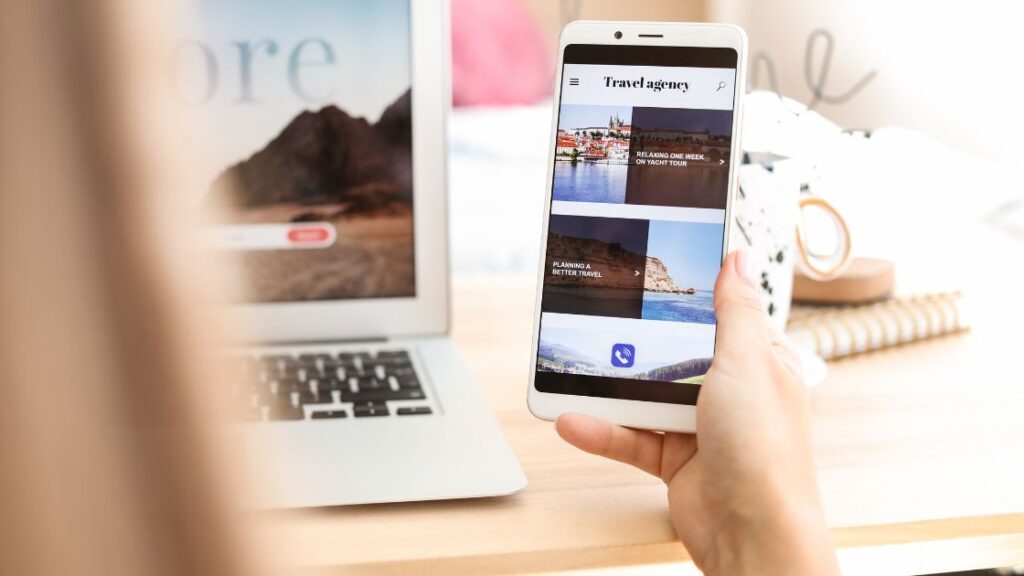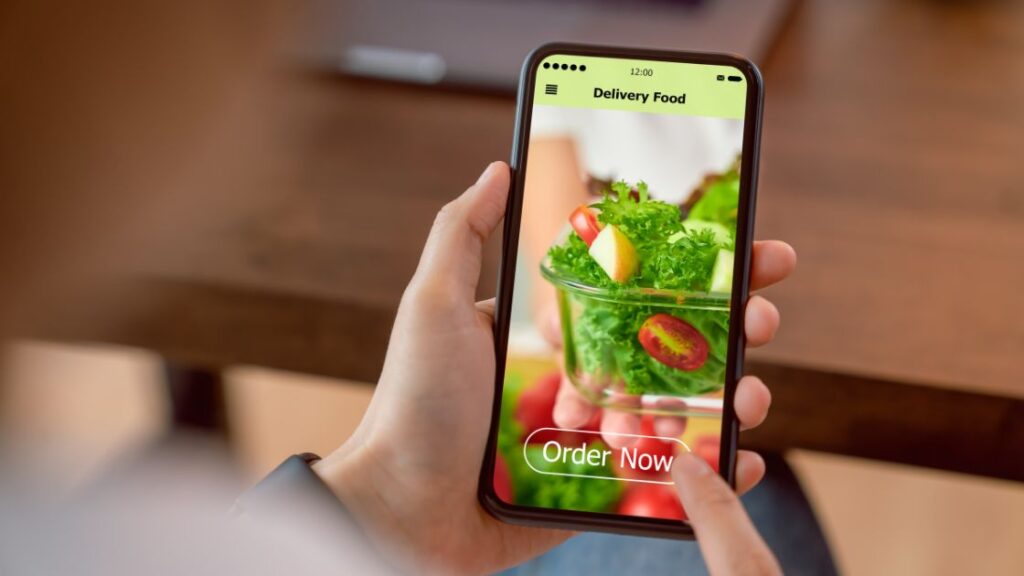Hey there! Robert here from Meta Trends, your friendly neighborhood web developer. As more and more people access the internet primarily through mobile devices, having a website optimized for smaller screens is no longer optional – it’s essential for providing a great user experience.
In this comprehensive guide, I’ll walk you through the critical elements of designing an effective and user-friendly mobile website. Whether starting from scratch or looking to improve an existing site, you’ll discover mobile-friendly design strategies that can help you engage and convert mobile visitors. Let’s dive in!
Introduction: The Growing Mobile Landscape
The mobile revolution is well and truly underway. Today, over 50% of web traffic comes from smartphones and tablets, which is only expected to grow over the next few years. Here are some fascinating statistics that highlight the steady rise of mobile:
- Global mobile internet usage has more than doubled from 2016 to 2023, from 44% to over 96%.
- More than 90% of users keep their smartphones within arm’s reach 24/7.
- 7 of 10 smartphone owners check their devices within 15 minutes of waking up.
- 52% of website traffic is from mobile devices, versus 48% from desktop.
With mobile dominating the digital landscape, having a mobile-friendly website is now necessary rather than a nice addition. A website failing to provide an excellent mobile experience risks losing a significant chunk of its audience and potential conversions.
Throughout this guide, we’ll explore practical tips and strategies to help you create a fast, user-friendly mobile website that caters seamlessly to touchscreen users on the go.
Section 1: Understanding Mobile User Behavior
To design an optimal mobile experience, it’s essential to understand how mobile users behave differently than desktop users. Mobile visitors tend to have shorter attention spans, browse websites differently, and have different expectations.

Critical Differences in Mobile Browsing Habits
Several studies have uncovered noteworthy differences between mobile and desktop browsing habits:
- Mobile use peaks at different times: Mobile usage tends to spike during morning and evening commute hours as users browse. Desktop usage is more prominent during regular business hours.
- Mobile browsing is more fleeting: The average mobile visit lasts less than 3 minutes versus over 5 minutes on a desktop. Mobile users are more likely to bounce between sites and apps quickly.
- Mobile users are more distracted: It’s easier for them to get interrupted or multitask, so maintaining their attention requires a concise delivery of information.
- Content consumption varies: Mobile users often consume lighter content quickly, like social media updates or news briefs. Desktop users tend to read more in-depth articles and research.
Mobile users tend to have shorter, more distracted browsing sessions than desktop users. This has important implications for your website design and content strategy.
Catering to Shorter Mobile Attention Spans
Studies show the average human attention span has shortened from 12 seconds in 2000 to 8 seconds today [8]. This effect is amplified on mobile devices, where small screens and constant notifications make it easier for users to lose focus.
Here are some tips to accommodate mobile attention spans:
- Prioritize above-the-fold content: Position your most important information at the top so mobile users see it immediately without having to scroll down.
- Use shorter paragraphs: Break content into manageable chunks using bullet points, numbered lists, headings, and paragraphs with no more than 2-3 lines.
- Highlight key points: Use bold, italics, or text color to emphasize important points and make scanning quicker.
- Add visual interest: Insert relevant images, illustrations, data visualizations, videos, or GIFs to capture attention before the text.
- Simplify navigation: Limit main navigation links to 5-7 options and have a minimalist mobile menu to avoid overloading users.

Meeting Mobile User Expectations
Today’s mobile users expect websites to be designed specifically to their needs and constraints. Some common expectations include:
- Fast load times: 40% of mobile users abandon a page that takes over 3 seconds to load. Optimizing site speed is critical.
- Easy navigation: All core site functions should be accessible within 1-2 taps. Minimal scrolling should be required.
- Mobile-first design: The site layout, touch targets, and text size should cater to mobile screens first rather than just shrinking the desktop site.
- Personalization: Location data and personalization features like past browsing history are more readily shared on mobile and expected to customize content.
- Task-based efficiency: Mobile users expect to be able to quickly accomplish specific tasks, like checking a product price or finding store hours.
Keeping these expectations and behaviors in mind will allow you to craft website experiences explicitly tailored to mobile user needs.
Section 2: Responsive Design Principles
Responsive web design (RWD) is an approach that allows your website content to adapt to different screen sizes, from desktop to mobile, flexibly. Making your site “responsive” is crucial for delivering a consistent, seamless experience across devices.
Responsive design rests on three core web development principles:
- Fluid grid layouts
- Flexible images and media
- Media queries
Let’s look at how to implement each principle:
Building a Fluid Grid Layout
Responsive sites are built on flexible grid systems rather than fixed pixel widths. As the viewport scales up or down, elements within the grid fluidly resize themselves to fit the available space.
Constructing a fluid grid starts with defining column widths using percentages rather than pixels. Here’s a simple responsive layout with two columns:
.column-1 {
width: 70%;
float: left;
}
.column-2 {
width: 30%;
float: left;
}This allows the columns to dynamically adjust their widths relative to the viewport rather than adhering to static pixel dimensions.

You can refine this using a mobile-first approach by stacking the columns vertically for mobile before re-arranging them horizontally for desktop breakpoints.
For advanced responsive layouts, leverage a CSS framework like Bootstrap that handles the intricate styles and scripts.
Making Images and Media Flexible
For images and other media assets, you’ll want to make them flexible to prevent distortion across screen sizes.
A simple way is by adding this CSS:
img {
max-width: 100%;
height: auto;
}This allows the image to scale down when needed but not stretch larger than its native size.
For even greater control, the <picture> element lets you define different image files to load based on media queries. For example:
<picture>
<source media="(max-width: 600px)" srcset="small-image.jpg">
<source media="(min-width: 600px)" srcset="large-image.jpg">
<img src="default-image.jpg">
</picture>This displays small-image.jpg for mobile and large-image.jpg for desktop, providing the best-optimized asset for each.
Using Media Queries to Adapt to Screens
Media queries allow you to conditionally apply blocks of CSS styling based on criteria like viewport width or device orientation. This is how responsive designs can tweak the layout to best suit the user’s screen size.
For example, you may define a mobile-specific navigation menu like so:
@media screen and (max-width: 576px) {
.mobile-menu {
/* Styles for mobile menu */
}
}This displays the alternative .mobile-menu only on small screens, seamlessly adapting the experience.
You can set multiple breakpoints to fine-tune the responsive behavior. Aim to keep your navigation usable at widths as narrow as 320px to accommodate all devices.
For a primer on media queries, check out this video.
Mastering these three responsive design principles allows you to construct an interface that caters to any screen size, providing a polished mobile experience.
Section 3: Simplifying Navigation for Mobile
An intuitive navigation menu is one of the most important elements to optimize for mobile. You want to simplify and declutter the desktop navigation to highlight only the essentials in an easy-to-use mobile layout.

Here are eight tips for mobile navigation success:
1. Streamline your menu options
Cut down your main navigation links to only what’s necessary on mobile. These should focus on primary pages and tasks, such as:
- Homepage
- Product/service pages
- Contact page
- Account/profile
Ideally, limit it to 5-7 top-level options. Additional secondary links can go in a mobile side menu.
2. Use succinct, clear labels
Navigation-link labels should be short and focused and use keywords that convey where they lead. For example, “Shop” instead of “Products”.
3. Make buttons fingertip-friendly
Links and buttons should be large enough for easy tapping, at least 44px x 44px. Include ample spacing between elements as well.
4. Test on touch devices
Continuously test your navigation on actual mobile devices to ensure responsiveness and usability. Your finger won’t lie!
5. Place prominent calls to action
Consider important calls to action (like Contact or Get a Quote) through visual contrast, prominent positioning, or notifications.
6. Have a mobile fallback menu
Use a “hamburger” menu icon to hide secondary links under a dropdown tap for minimalist mobile layouts.
7. Use responsive code
Build your menu using media queries and percentages rather than fixed pixels to flow across device sizes.
8. Avoid clutter
Keep your mobile navigation clean and scannable. Too many elements cause clutter and inhibit scanning.
By honing your navigation design, you can create mobile menus that are effortless to use and optimized for speedy decision-making.

Section 4: Optimizing Content for Mobile Screens
With less screen real estate available, content must be adapted for optimum mobile readability. Applying these strategies will help mobile visitors easily digest your content:
Lead with the main point
Get to the core info first before elaborating. Mobile readers will appreciate you highlighting the most important content upfront.
Use succinct paragraphs and lists
Avoid dense walls of text. Break content into short 1-3 sentence paragraphs using bullet points or numbered lists where appropriate. Lists help focus attention on key ideas.
Structure content with headings
Add descriptive subheadings (H2, H3 tags) to content sections. Headings create visual structure and make skimming easier.
Include visuals
Insert relevant images, illustrations, charts, or videos where appropriate. Visuals quickly engage readers and enhance scannability. Ensure they are optimized for small screens.
Link to expanded content
For more lengthy articles, you can provide “Read More” links after short previews to unclutter the mobile layout while allowing access to further content.
Use responsive text sizing
Make sure text can resize responsively across devices for improved readability. Avoid absolute pixel or em sizes.
Maintain simplicity
Streamline content to focus on key tasks and messages. Remove any non-essential content that clutters the mobile interface.
Creating bite-sized, scannable content optimized for mobile makes it easy for on-the-go users to extract value from your pages quickly.
Section 5: Optimizing for Speed
Site speed is a make-or-break factor for mobile usability. With slower networks and impatience for laggy sites, optimizing for faster page loads is critical.

Here are five performance tips to accelerate your mobile website speed:
1. Minify code
Minification removes unnecessary characters from code like whitespace, comments, and indentation to reduce file size. This significantly speeds up load times. Enable minification in your Content Management System or use tools like Grunt.
2. Compress images
Image optimization compresses file sizes without sacrificing quality. Use compressed JPG, PNG, and WebP formats. Consider lazy loading images below the fold.
3. Use a CDN
Content Delivery Networks (CDNs) distribute static assets globally so visitors download from nearby servers, reducing latency. CDN services like Cloudflare also cache assets.
4. Enable browser caching
Browser caching allows assets to be temporarily stored locally on a device, avoiding re-downloads with each page visit. Configure server headers for optimal caching.
5. Eliminate redirects
Multiple unnecessary redirects can slow things down. Audit your site for chains of redirects and create direct links where possible.
With page load times directly impacting your mobile visitors’ experience and satisfaction, dedicating effort towards performance optimization is one of the highest-value activities.
Section 6: Designing Intuitive Mobile Interactions
Catering to smaller touchscreens requires some unique design considerations to create easily tappable interactive elements:
Fingertip-friendly sizes
- Buttons/links: ~44px x 44px minimum
- Input fields: height ~36px minimum
- Provide ample spacing between elements (at least 8px)

Clear visual cues
- Use color contrast, shadows, and animations to indicate tappability
- Display keyboard cues (e.g., input placeholder text)
Limit typing input
- Use dropdowns/selections instead of typing where possible
- Minimize free-form fields
Test touch targets
- Tap around on real devices to find any usability issues
- See if interface elements are comfortably reachable
Support “thumb zones”
- Place necessary actions centrally where thumbs easily reach
- Avoid critical actions only in far corners
Ensure touchscreen compatibility
- Use apps like Typewise to test tap target sizes
- Confirm all interactive elements respond to touch events
Though often overlooked, crafting your site for seamless touch interactions can enhance usability and accessibility for your mobile visitors.
Section 7: Testing Across Devices
To build a polished mobile experience, continuously testing your site across physical devices is essential. Relying solely on resizing a desktop browser misses many mobile-specific issues.

Here are some tips to incorporate hands-on testing in your process:
Use real mobile devices
Invest in having a variety of smartphones and tablets for testing. This allows you to experience the UI and speeds firsthand.
Test on iOS and Android
Evaluate functionality on both platforms. One may exhibit platform-specific bugs, and the other doesn’t.
Try different networks
Verify performance on WiFi, 3G, and even 2G networks. Speed bottlenecks become apparent on slower connections.
Test orientations
Rotate devices to portrait and landscape modes to detect any layout issues.
Do field testing
Test your site on the go: in cars, outdoors, or where users will access your site. Real-world conditions often uncover unique usability problems.
Gather user feedback
Have target users evaluate your mobile experience and provide qualitative feedback through interviews or surveys.
Regular hands-on mobile testing throughout development can help you identify and rapidly iterate on issues before launch.
Section 8: Ensuring Mobile Accessibility
An accessible mobile experience is usable by all people regardless of disability. Failing to account for accessibility needs excludes segments of your audience.
Here are 5 tips to help make your mobile site inclusive:
Design for screen readers
Screen reader users should be able to navigate and understand content without visuals logically. Ensure proper semantic HTML structure.
Provide text alternatives
Images, icons, and multimedia require accompanying text descriptions to convey their meaning for screen reader users.
Ensure color contrast
Visual elements must have sufficient color contrast to remain distinguishable for low-vision users.
Make tap targets spaced and sized
Tap target spacing and sizing should accommodate users with motor impairments. Minimum sizes help avoid mis-taps.

Support OS accessibility features
Ensure your mobile site integrates with native accessibility tools like screen readers or text resizing built into iOS and Android.
Visit WebAim for a comprehensive mobile accessibility checklist and best practices.
While meeting every criterion takes effort, improving the accessibility of your mobile experience opens it up to millions more potential users – and it’s the right thing to do.
Section 9: Optimizing for Mobile SEO
Designing a mobile-friendly site doesn’t just improve user experience – it’s also better for search engine optimization (SEO).
With Google’s mobile-first indexing making mobile version SEO a priority, here are five ways to boost mobile SEO:
1. Ensure site is mobile-friendly
Google specifically boosts mobile-friendly pages in search rankings. Eliminate mobile site errors and confirm your site meets Google’s mobile-friendliness criteria.
2. Optimize speed
Faster mobile sites are rewarded with better SEO since slow load times increase bounce rates. Minify code, compress images and optimize caching.
3. Use structured data
Adding structured data like FAQ schema or product schema can enhance the presentation of your pages in mobile search results.
4. Target long-tail keywords
Longer, conversational keywords are used more on voice searches. Optimizing for natural language queries can capture voice traffic.
5. Provide local information
Enable Google My Business and include accurate location or contact info to appear for relevant local searches by mobile users.
With mobile-first indexing, ensuring your site provides an excellent mobile experience is crucial for solid SEO performance.
Conclusion
Hopefully, this guide has provided a helpful overview of techniques and strategies to consider when designing your website for mobile visitors.
While optimizing for mobile does require dedicating effort up front, doing so pays dividends through better user experience, engagement, conversions, and search visibility.
As mobile continues to dominate traffic, ensuring your website caters to touch devices will only grow increasingly important over time. By following an iterative, user-centered design process, you can craft interfaces that feel purpose
